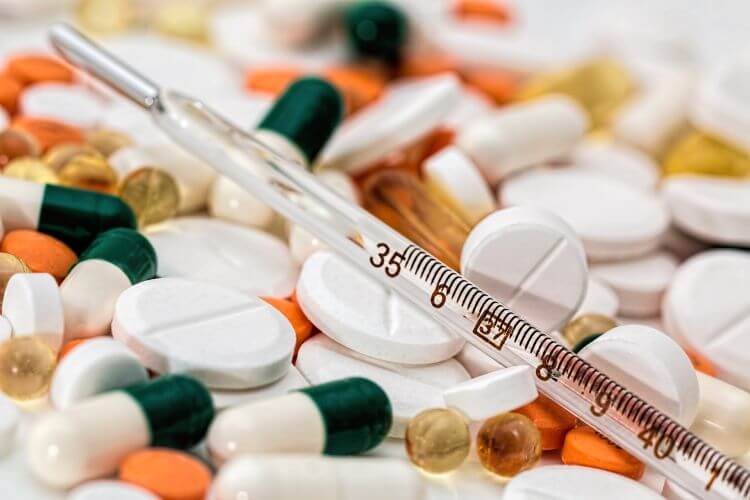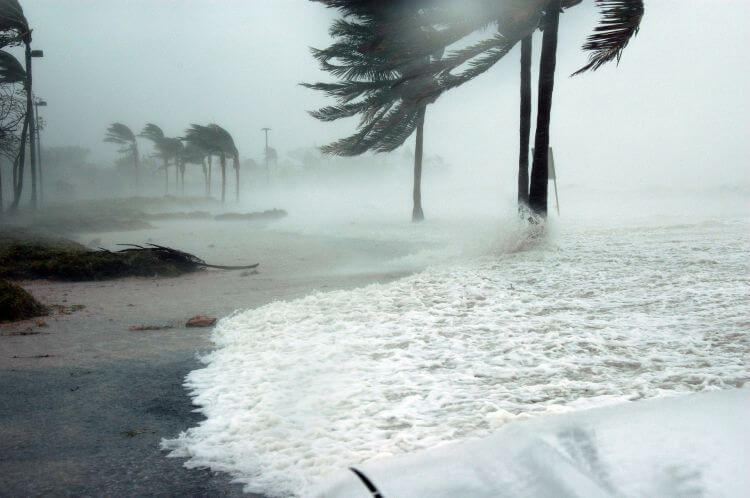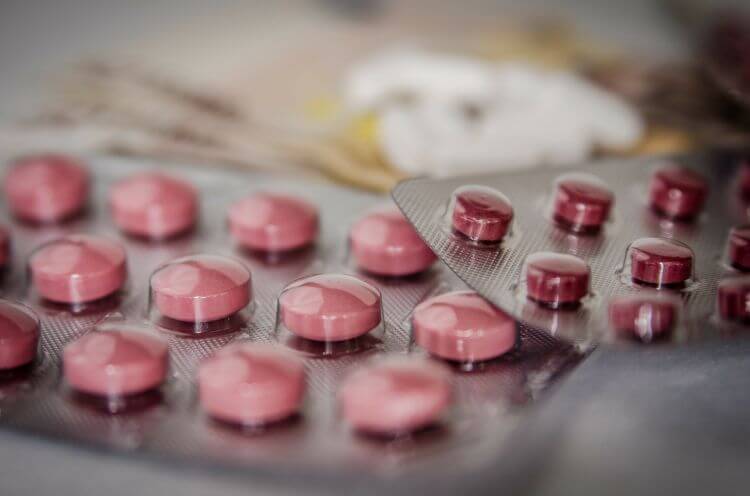All seniors in America should at least have some level of preparedness, especially when it comes to prescription medications. It’s been said that close to 50% of all Americans take at least one prescription medication, and close to 33% of all Americans take three or more. Approximately 12 million prescriptions are filled throughout the United States every day.
People need their prescriptions. When somebody can’t get access to their bronchodilator, runs out of blood thinning drugs, or loses access to their antipsychotics, things can get very dangerous very fast. This is even more reason for Americans with pharmaceutical needs to prepare to the best they can to mitigate their risk of disaster.

How Could a Disaster Affect Pharmaceuticals?
Just like any other industry, the pharmaceutical industry is vulnerable to disasters as well. Tornadoes don’t really care what buildings they rip through, floodwaters are no respecter of persons, and power outages affect everyone.

If roads throughout the region of a pharmaceutical factory become impassable, then the drugs stay put. If many casualties take place in a neighborhood where most of the workers are pharmaceutical factory workers, the factory has that much more difficult of a time creating their products.
This isn’t too far-fetched of an idea either. Hurricane Maria of 2017 injured many pharmaceutical factory workers and was just one additional reason why the entire country of America faced a drug shortage.
Puerto Rico is of Prime Importance
Anybody who lives within the US needs to pay particular note to the US territory of Puerto Rico. From 1976 to 2006 Operation Bootstrap was put into effect within the United States. By offering tax incentives to American manufacturers, this caused a huge number of American manufacturers to leave the United States.
Corporate taxes were not applied to profits made on factories within American territories throughout this time window and it led to millions of Americans losing jobs. Now, Puerto Rico manufactures at least 10% of all American pharmaceuticals. It’s estimated that 13 of the top selling patented drugs in the United States are made here, that over 70 medical devices are made here, and that at least 101 name brand drugs are made here as well.
And in all truth, those numbers are likely to be higher. Pharmaceutical companies are very hush-hush when it comes to what they manufacture and where, so there may be others made here we don’t know about.
Puerto Rico makes so many pharmaceuticals for the United States that it is believed they manufacture over $40 billion worth of prescription drugs per year – more than any other country in the world. So, as you can see, Puerto Rico is of vital importance to the state of the American drug industry.
We can see just how important Puerto Rico’s factories are if we simply look back a few years ago. In 2017, Hurricane Maria devastated the small island nation. Factory workers were injured, roads were blocked, and damage was done to buildings. The result was that the standard of care throughout the entire US was negatively affected.
Even something as simple as a prolonged power outage could negatively impact the state of Puerto Rico’s manufacturing capabilities, in turn impacting American patients.
How Can I Protect My Existing Drug Supply?
All the .gov literature points to a few steps that one can take to protect their current pharmaceutical supply in the event of a national disaster. For starters, keep all your prescription drugs in one easy to access location. In the event of an emergency evacuation, this means you’ll be able to quickly grab your prescriptions without missing anything as you run out the door.
It’s also been pointed out that during an emergency evacuation storing one’s prescription drugs in a waterproof container is ideal. The FDA recommends an empty water container – which I suppose would work if nothing else was available – but in my experience, seniors who take prescription medications often have a difficult time of telling their pills apart from each other. To just dump a conglomeration of pills into one large container is a recipe for future problems.
I am of the notion that it is best to prepare for this eventuality beforehand. A simple watertight box, easily picked up at your local Harbor Freight, or a common dry sack such as backpackers use to carry their food in could both prove superior options to an empty water container that could still protect medications against inclement weather.
At some point though, one is going to need another resupply. The only way to get that is to go to an area that still has a functioning supply chain and that is likely to have stocks of prescription drugs still. To my mind, this means the further one can remove themselves from the scene of a disaster, the better off one will be.
What Happens If the Pharmaceutical Supply Chain is Disrupted?
While the FDA requires drug manufacturers to give them at least six months’ notice in the event of a perceived shortage, disasters rarely give one this much warning. This six-month rule is given so that the FDA can help to line up alternative means of drug production for American consumers. If it’s not met then the supply chain can become disrupted.
In the event of shortages, the FDA often relies on foreign entities to fulfill the gap. This means prescription drugs could be shipped over from England and Germany to help meet American demand. However, this is a stopgap measure, and it’s unlikely to completely fix any shortages.
Potentially, the American pharmaceutical user could find themselves at the receiving end of prescription rationing, alternative prescriptions, or smaller prescriptions being given.
Prescription rationing is a means by which doctors become very choosy with who they are willing to prescribe particular medicines to. It’s a form of triage. Whoever needs the drug the most is going to get it. Alternative prescriptions are one means by which this is accomplished. Within the United States, there are often numerous drugs that will get the job done.
If somebody can lower their blood pressure with one of eight different medications, a shortage in one isn’t as catastrophic as compared to the man who can only get his medical condition treated with one of two medications.
The problem here is that some people do not respond well to some pharmaceuticals, are allergic to them, or simply don’t get the hoped-for results when they take them. These people are likely to be the ones who are triaged to receive whatever remaining doses are left of the medicine that is being rationed.
The last option that pharmacists will use is to give smaller prescriptions. Whereas one may have been able to pick up a 25-day supply of their medicine during “normal” times, in the event of a shortage, one may only be able to pick up a 7-day supply.
Would a Drug Shortage Lead to Violence?
I would argue yes. Disasters are inherently dangerous situations to begin with, and my experience has led me to dismiss any notion that false optimists will throw out there of everybody “coming together” and singing around a bonfire together after a major disaster takes place.
Desperate people do desperate things, and hunger, thirst, fear, cold, and withdrawal can all easily cause a person to turn desperate. If somebody has become addicted to a medication, they are going to do what they can do to get it. You’ve heard of the multiple stories of people robbing others to get their oxycontin.
I think that an absence of antipsychotics and antidepressants could be yet another cause of potential violence, though. If a patient who needs either of these drugs suddenly stops taking them the withdrawal symptoms can be severe. In the case of antipsychotic withdrawal, the patient can end up suffering from hallucinations, delusions, psychosis, or paranoia.
It’s estimated that there are approximately 80 million people within the US who are on some type of antipsychotic. Am I saying that in the event of a drug shortage, we’re going to see 80 million people suddenly become homicidal maniacs, turning America into a Mad Max apocalypse?
No, by no means. But some of them will. Ask any police officer. What have they seen when some guy is off his meds? Has the guy become violent? Did he ever hurt anybody? Just food for thought.
How to Check Drug Shortages
The FDA keeps a running record of what prescriptions are currently experiencing a shortage within the US. You can find that information at this site. This is worth checking up on occasionally to see if there are any prescription drugs experiencing supply chain difficulties that could impact you or your family.
What Can I Do to Get Prepared?
Unfortunately, prescription drugs are so highly regulated that it is difficult to do much in the realm of preparedness. Or at least, it’s hard to do as much as a prepper would typically like to do. As preppers, stockpiling away millions of calories is no big deal. A prepper with a year’s food storage at hand is not uncommon. Wouldn’t it be nice to be able to stockpile a year’s worth of prescription medications?
Sadly, this is not possible in most situations. Though it would make for a more resilient nation, the fear is that this would lead to rampant drug abuse. However, there are ways to buy antibiotics without a prescription.
Jase Medical is a company that will ship antibiotics to your home after an online questionnaire.
What people have often done in the past, though is to fill their prescription the day the option becomes available to them. Most insurance companies allow you to refill your prescription every 25 days. If you do this over the course of a year, you could end up with an additional 60-day supply of pills to help tide you over during a times of disaster.

That gives you two months to figure out some alternative form of action, whether that be relocating, finding other pharmacists who still have medicines in stock, or the like.
In addition, it’s worth pointing out that not needing medication is a huge plus. Being overweight or obese is one of the primary causes of many peoples’ hypertension. I’ve witnessed numerous people actually have their doctor take them off of their blood pressure prescription after they lost a sufficient amount of weight to where their blood pressure fell to normal levels.
While this is most certainly not the case for every health condition – some of them force you to make do with the hand you’ve been dealt – there are many conditions that can be positively impacted by daily behavior patterns.
In the event of high blood pressure, these people were able to reduce their dependence on the pharmaceutical industry via regular exercise, healthy eating, reducing their stress, and interacting with a community. All these variables worked to give them a grand outcome: no longer needing a prescription medication.
Drugs Matter
As you can see, the pharmaceutical industry is not immune to troubles of its own. The factories themselves don’t even have to go down. All that’s needed for a nationwide drug shortage is for there to be issues with the supply chain. If the ships aren’t being offloaded or the roads aren’t being traveled, those drugs aren’t going anywhere.
This is more reason for the individual to act. Do what you can to protect your family in the event of the pharmaceutical industry facing a disaster of some sort. Following the above listed tips can help you to do just that.
What are some other tips that you can take to better prepare yourself for these types of situations, though? Are there some that we left out? Are there other potential vulnerabilities with the American drug industry we didn’t discuss? Let us know in the comments below.
If you’re concerned about medical care generally after a collapse, make sure to have a copy of Where There Is No Doctor in your survival library.
- Used Book in Good Condition
- David Werner (Author)

